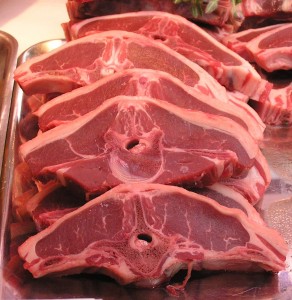
Red meat prices already on the rise as farmers restock and Japanese agreement comes in
The Australian red meat industry has seen cattle and sheep prices soar, as it welcomes the news that the Japan-Australia Economic Partnership Agreement (JAEPA) will enter into force on 15 January 2015.
In response to widespread rainfall over the Christmas/New Year break, the Eastern Young Cattle Indicator (EYCI) started 2015 with a big jump on the 2014 close, up 39.25¢, to 415.25¢/kg cwt, according to figures from meat growers representative body Meat and Livestock Australia (MLA). Largely assisting all markets was strong feeder interest, despite the number of cattle on offer for the first day being relatively high.
Highest prices since January 2012
Not only did markets commence 2015 stronger than where they closed last year, the EYCI was up 121.25¢/kg cwt year-on-year – reaching its highest point since January 2012, according to MLA. MLA said some markets in particular performed exceptionally strongly, with EYCI eligible cattle at Wagga averaging 437.55¢/kg cwt, while Tamworth was 457¢ and Forbes 439¢/kg cwt.
While the widespread rain has clearly sparked some producer confidence, MLA said the longevity will be depended on timely follow-up falls. However, the significant lift in over-the-hook prices over the Christmas period suggests processors are anticipating a contraction in supplies – further supporting producer confidence for those with cattle to sell.
Prices fuelled by restocking after drought
The rise in production of beef and lamb towards the end of 2014 was fuelled by widespread drought and dry conditions across the heavily populated cattle regions. The dry conditions led to high slaughter rates, with the eastern Australian States weekly kill regularly exceeding 170,000 head of cattle — significantly greater than the usual 130,000 to 140,000 range — and lamb rates nudging 400,000 head per week.
MLA said demand on the global red meat market offered support for both beef and lamb prices, with the US in particular demanding extremely high volumes of lean beef at record high prices towards the end of 2014.
Similarly, lamb exports also surged, with greater volumes to all markets. While the greater supply from Australia drove much of the increase, the progressive devaluation of the A$ also assisted trade, according to MLA.
However, the Weekly Times and other farmer publications this week reported that beef cattle auction sales in Wodonga and other saleyards in southern Australia were inundated by cattle farmers from central and northern New South Wales. Farmers from these regions are buying heavily in order to restock their farms after good recent rains ended previous drought conditions.
JAEPA to expand exports of Australian red meat to Japan
Meanwhile, under the new trade agreement with Japan, the JAEPA, tariffs on frozen Australian beef entering Japan will drop from 38.5 per cent to 19.5 per cent over 18 years, and chilled beef tariffs will fall from 38.5 per cent to 23.5 per cent over 15 years.
In 2014, Australia shipped 293,778 tonnes swt of beef to Japan, 2 per cent higher than 2013 and 23 per cent of total beef exports during the year, underpinned by improved demand for Australian chilled beef products. Australia’s red meat industry employs approximately 200,000 people in the farming, processing and retail sectors and contributes A$17 billion to the Australian economy each year.
“Japan has been a critically important partner for the Australian beef industry and our most valuable export market over many years, so this deal provides a useful advantage to the sector,” said Lachie Hart, Chairman of the beef industry’s JAEPA Taskforce.
Entry into force on 15 January 2014 will deliver the first tariff cuts (8 per cent on frozen beef and 6 per cent on chilled beef) with the second tariff cuts (2 per cent frozen and 1 per cent chilled) due on 1 April 2015 – the commencement of the Japanese fiscal year. For sheepmeat, the JAEPA tariff will remain at 0 per cent.
“As a result of the JAEPA, sales of Australian beef to Japan are expected to rise by around $5.5 billion over the term of the agreement boosting the annual gross value of Australian beef production by up to 7 per cent,” Mr Hart said.
Mr Hart thanked the Prime Minister, Minister for Trade and Investment, DFAT officials in Canberra and the Australian Embassy in Tokyo for their combined efforts in achieving entry into force of the JAEPA prior to the end of the Japanese fiscal year, enabling two tariff cuts within several months.
“We wish to congratulate the Australian Government in negotiating the best result that could be achieved for the beef industry, and hope to see further trade reform efforts with Japan via the Trans-Pacific Partnership and Regional Comprehensive Economic Partnership negotiations.”





